|
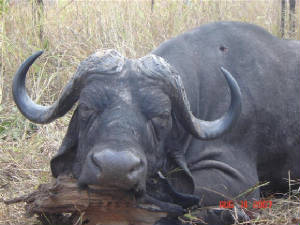
JOHN DICKSON
2894 and ALEX HENRY 7186-‑
ONE IN THE SAME
text
by Cal Pappas
photos
by Doug E. Griffin and Matt DeVincenzi
The
theory of evolution perhaps came to be a fact when I began to trade and sell my Winchesters as double rifles began to call.
The clarion call was irresistible and doubles have become the object of my affection. (After all, the most elaborate Winchester
is nothing more than a mass-production rifle with embellishments added.) My interest in firearms evolved to the highest level
with the English doubles and I have never had a moment of regret.
One
aspect of my general interest in fire-arms that carried over to my new -found
love of doubles was that of a duality of the specific era (late 1800s
to early 1900s) and the history of each individual firearm. Now, a double rifle has found its way into my possession that
needs to be shared with you. Not only is this rifle unique in caliber and configuration but it is also a gold mine of history.
Before going into the details let me relate the circumstances on its acquisition.
The
last non-double rifle I planned to dispose of was a classic Cogswell and Harrison Mauser bolt action in the .375
H&H
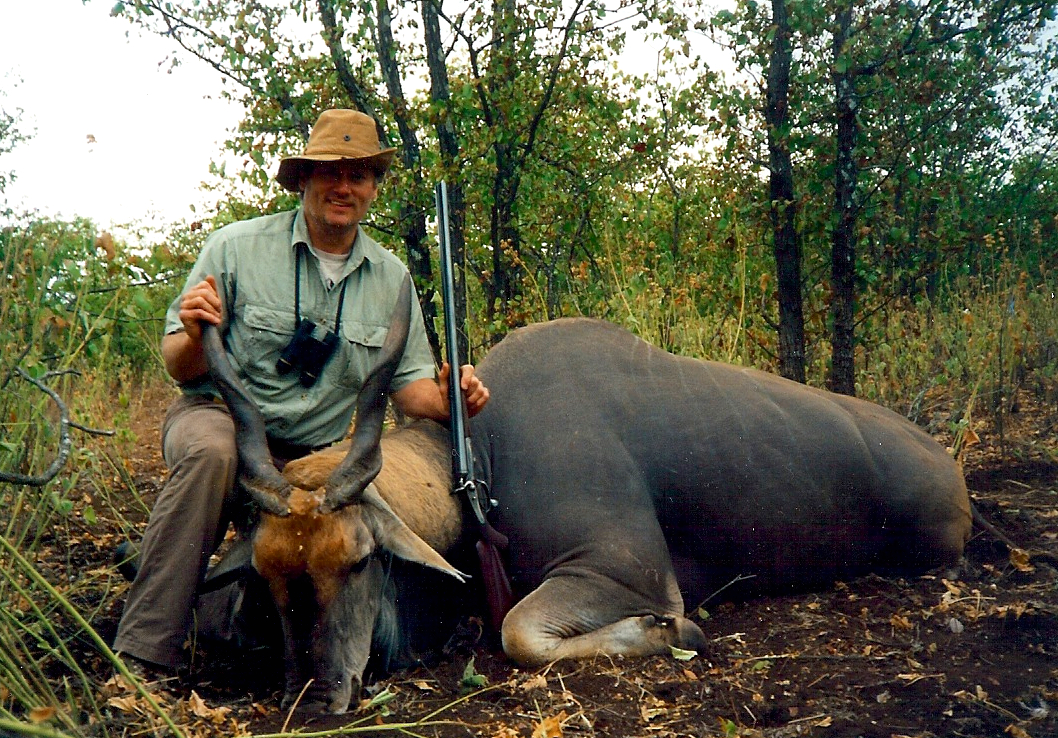
magnum cartridge
that dated to 1926. It sported a Griffin and Howe side mount, three leaf express sight, a 26-inch barrel, cheek piece stock,
and a desirable take-down feature. Cased in oak and leather it was a difficult one to part with. What awaited was by far more
of a treasure.
The double rifle
that was soon to me mine (after a trade with a bit of boot added) was a John Dickson exposed hammer, Jones underlever rifle
in the rare caliber 20-.577. This cartridge was a proprietary caliber by the Scottish firm of Alex Henry. It is a 2 3/4"
20-gauge brass shotgun cartridge necked down to accept a .577 bullet (.584" dia.). The powder charge was the same as the standard
.577 3-inch at 165 grains (six drams) al-though one is known to the author with a proof of 7 drams and a few have a nitro
proof stamp.
The rifle sported
28-inch barrels, a straight grip stock with a semi-pistol grip formed by the bottom strap, a cheek piece, and recoil pad.
The action was finely engraved and the rifle had under-gone an excellent refinish sometime in the past--stock finish, case
colors, and barrel blue were in excellent condition. Last of all the Dickson rested in an oak and leather case with accessories.
(I've never missed the .375...much).
Upon acquisition
of any new rifle I first attempt to learn about its history. The summer of 2002 seemed to be a good time to so.
I was on vacation
from my job as a high school history teacher and was spending the next eight weeks in a full-length leg cast due to a complete
rupture of my left Achilles tendon sustained on the last day of a hunting trip in South Africa the week
prior. (Just
before I departed for my hunt the Dickson became mine.)
A letter was
faxed to Dickson and McNaughton (a fairly new corporation en-compassing most of the famous Scottish makers of the past century).
A reply was short coming but upon reading the copy of the Dickson ledger I was disheartened. The rifle, my prized rifle, was
made for a James Robertson, Esq. in 1868 as a "double central fire breech-loading rifle, number 2894, gauge 12." That's right
a 12-bore rifle! Did I have a non-original rebarrel?
The ledger continued
with the stock dimensions and the "weight of barrels 5 3/4 lb., length 27 inches. Back lock, charge of powder 3 drams,
stock unvarnished, spur guard." I now knew the proper name for the grip formed from the bottom strap--a spur guard. But I
was saddened by the 12-gauge rifle barrels with the 27-inch length.
But wait! On
the barrel flats was another number: AH7186. Knowing the 20-.577 cartridge was developed by Alex Henry and, to the best of
my knowledge, was not released to the trade I reached for the phone. My call to Dickson and McNaughton came with a request
to search the Alex Henry ledger. (I must state the folks in the Scottish and English gun and rifle trade are the most polite
and willing to assist).
The sad news
(I was told) was the serial numbers stopped well before the AH number, 7186, of my rifle. However, be-fore a tear could fall,
my new found friend in Scotland said, "One moment, here are some unregistered numbers for after-market work." Then he read
to specifications of number 7186. "New barrels to

|
| Jerry and Rose Whitehead at Marakanga Ranch |
Dickson rifle,
20-.577, 28 inch steel, nitro proved, upright sight--standing and two leaves, 1-2-300 yards, usual front sight--plate tip,
26th Nov., 1900, Kynoch solid drawn shell, 70 grs. rifleite, 650 gr. bullet, nickel coated soft nose, barrel weight 7 lbs.
10 oz. for Cap't McNeill." A copy of the ledger would soon be mailed.
I looked at
the new object of my affection. Everything I enjoy about double rifles was here--quality, originality, and history. Since
it would be a while before I was able to walk to the range and shoot it I sent if off to my friends at Griffin and Howe in
Bernardsville, New Jersey (908-766-2287) for an inspection and a re-placement of the recoil pad. I also placed and order to
Rocky Mountain Cartridge in Cody Wyoming (307-587-9693) for two boxes of
brass cartridge
cases and to 4D-CH tool (740-397-7214) for a set of dies and a shell holder.
A good friend
in Alaska who is also perhaps the finest machinist I know made a chamber cast for the reloading die specifications
as well as a bullet mould to the approximate weight and shape of the original projectile. I requested a 650-grain bullet that
I planned to cast from wheel weights. Two days later I received a call, "I have your mould ready. It casts at 647 grains.
Is that OK?"
The 2002 summer
drew long in my full-leg plaster. I cast a lifetime supply of bullets for all of my rifles and lubed and sized the same. I
was unable to pursue my outdoors passions in the 24-hour day-light in Alaska as I have done for the past twenty years. All
of my hunting trips (moose, caribou, black and grizzly bear,
as well as a permit for Dail sheep in one of the finest areas of the state) had to
be canceled.
All facets of
double rifle ownership that I enjoy were coming together but there was still one more question to be answered--who was Cap't
McNeill? Well, I wasn't going anywhere so I began to follow this route. A letter to the Scottish Military Museum was promptly
answered by Ms. Edith Phillip from the library. If gold had been struck in the factory ledgers, I was about to uncover
the Mother Lode!
Captain Malcolm
McNeill was born on January 30, 1866, the son of Lt-Col A.C. McNeill. He entered the army in 1885 when he was 19, serving
in several African campaigns and World War One. He won several medals and awards and died suddenly on June 3, 1917. (It
is not stated if McNeill died of illness, war wounds, killed in action, etc...). His main recreation was big game hunting,
fishing and shooting and a museum stands in Oban, Scotland (his home) with his hunting trophies. And it gets better.
He authored a book about his military life and hunting trips in Somaliland. Entitled, "In Pursuit of the Mad Mullah--Service
and Sport in the Somali Protectorate," the book only had one printing (1902). I had to locate a copy.
My mom has a
bookseller friend in (the People's Republic of) Massachusetts and she asked him to do an internet search. Three copies were
found. The two in England were not in the best of condition. Johannesburg, South Africa, was home to the best copy and it
was soon on its way to my home in Anchorage as a birthday gift. A framed photo of the captain was
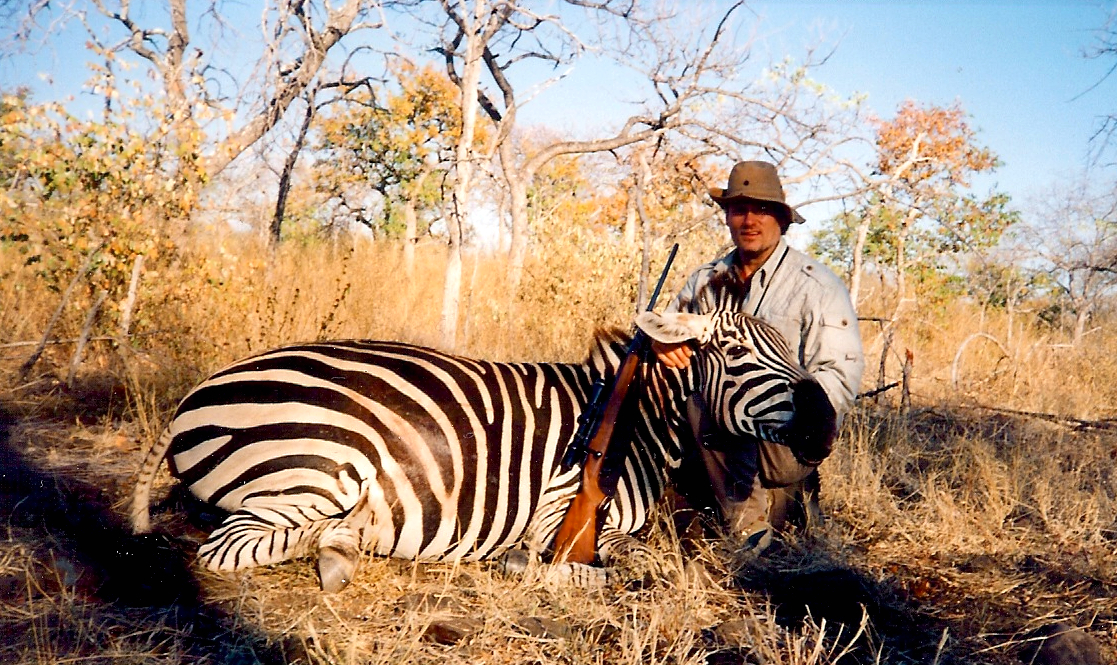
located
in London and it, too, was ex-pressed to me.
Captain
McNeill was scheduled to go to India in late 1900 but had a last minute order change that was to see him off to Africa's Somaliland.
He purchased the 20-.577 in late November of that year so he would have an adequate rifle for his big game
hunting.
"...just as I was preparing to re-turn to India, I received notice from the War Office to the effect that I had been selected
for service with the Somaliland Field Force, and that I was to report my-self without delay at the Foreign Office" (p.2-3).
McNeill had served (and hunted)
in
Somaliland iri the mid-1890s and his dream to return was fulfilled.
I
had thoughts of Captain McNeill's book filled with stories of man-eating lions and charging elephants all stopped with his
trusty 20-.577. Of course the book would be decorated with photographs of the captain, his rifle, and his large and dangerous
trophies he brought to bag. Reality was almost as good!
The
front piece of the book has a photo-graph of the captain sitting with the 20-.577 cradled in his arms. No game photos are
printed with my rifle but one is printed of McNeill's first lion (one of four man-eaters he was after) killed with his
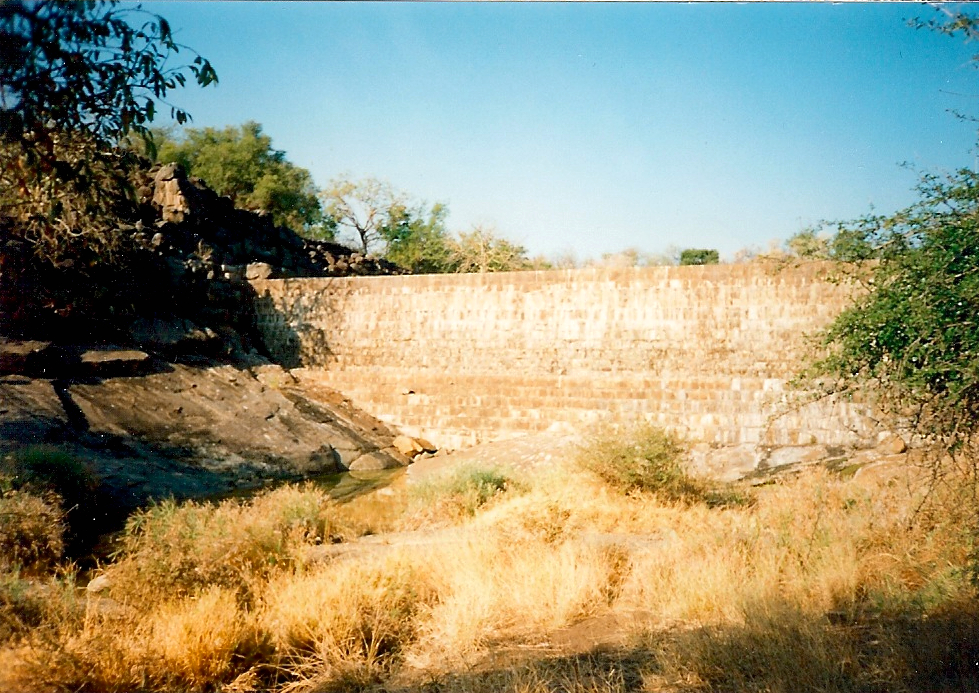
|
| Nyala Dam took three years to build--all by hand. The Whiteheads employ 40 Africans on the ranch |
12-gauge paradox
double. The story is a good one.
While on a mission
to capture the renegade Mahomed Abdullah the Captain was told of four man-eating lions that were terrorizing a small
village. He detoured from his mission to investigate and found the remains of a man and two camels in the newly deserted village.
"I had with me a 12-bore paradox, shooting 4 drachms--just the weapon for night work--and a .275 sporting Mauser. The latter
was hardly the rifle for lion shooting, but I had brought it for dibtag, and my .577 had gone on with my camels." (p.45)
The first lion
he took (with his 12-bore) was 8' 4" long. His camels arrived soon after and he was able to now take his 20-.577 in pursuit
of the remaining three lions. "I also had my .577 by now, and felt quite prepared to meet anything that might turn up" (p.53).
Upon successfully
tracking lion number two, McNeill "...immediately knelt down and fired with my .577, taking him just in front of the shoulder.
On receiving the shot he pulled up at once, nearly falling as he did so, and the left barrel knocked him clean over. He managed
to crawl under a small tree about 2 or 3 yards off and to get his head round facing me. I put in another shot for safety's
sake when I got to about 80 yards from him, but he did not really require it--either of the first two would have killed him.
This lion was the biggest of the three I got that day, 8 feet, 10 1 /2 inches as he lay--a big, powerfully made beast, but
with no mane" (p.57-58).
The remaining
two lions were out of sight in the tall grass. Later that day McNeill bagged his third lion--the second with the 20-.577.
Unable to flush the beasts out,
McNeill started
a grass fire. "He stood at the edge of the fire
about 80 yards
from me, broadside on, and I at once gave him the .577 in the left shoulder. On receiving the shot he turned round and charged
straight back through the fire (which was about 18 or 20 yards off), burning his whiskers and singeing himself generally,
but not very badly. On getting through the flames he stood on his hind legs, pawing the air, and then fell over on his side--dead"
(p.59). The last lion, a female, departed for safer grounds and was not seen again.
I was one happy
camper! The remainder of the book is divided into McNeill's military exploits and small game hunting with his .275.
Now it is spring
2003 and nearing the end in perhaps the warmest winter on record in Alaska. McNeill's book has been read and reread, the dies
are here, the brass is here, the rifle has returned from Griffin and Howe, and I have reloading information from a friend
in Florida who also has a 20-.577. (His rifle is a Holland and Holland, regulated for black powder, is a best quality
weapon, and very accurate).
My prior experience
with light nitro and nitro-for-black loadings has shown IMR 4198 the best choice. In most instances I have found accurate
loadings will result with a grain-for-grain charge. Since my rifle was proved for 70 grains of rifleite (an early cordite)
I began with a starter load of 60 grains of 4198 with kapok filler. I increased the charge 2.5 grains with each 4-shot string.
Shooting through a PACT chronograph I recorded the velocity as well as noted the left and right pat-tern on the 50-yard
target.

All
4-shot groups patterned quite well but the rifle shot several inches high at 50 yards. (A bit of filing on the rear sight
should take care of this minor problem) The load settled on was 75 grains of 4198 with a tuft of kapok pillow stuffing to
keep the powder next to the large rifle magnum primer. The wheelweight cast bullets of 647 grains exit the barrels at an average
of 1743 fps. The muzzle energy calculates to 4366 fpe and John Taylor's knock out value is 94. The recoil is a bit heavy but
manageable in the 12-pound rifle. The bores pick up a bit of lead due to the pits remaining from the cordite days. Woodleigh
650-grain jacketed bullets should solve this second minor problem.
What
does the future hold? 2003 was spent hunting with a .450 no2 double and saw success with a cape buffalo, giraffe, and an arctic
grizzly bear. Next year the 20-.577 may see a spring bear hunt or perhaps a water buffalo hunt down under. Whatever happens,
it will be a joy to take Captain McNeill's rifle to the field after a 100+ year rest.
One last note. due to the complexities of reloading and the condition
of antique rifles neither the author or publisher of this journal makes any claim as to the safety of the loads listed herein.
They have only been proven to work in the author's rifle. Have your antique rifle checked by a competent gunsmith before firing.
Good shooting!
Post
Script: The long, cold, and dark winter nights are here and I'm reading one of my favorite stories. Teddy Roosevelt's
African Game Trails has been my
companion on more than one subzero night at my cabin over the years.
This time, something struck me as if hit by lightning. How could I have missed it be-fore and now have it standout so significantly?
There it was, right in front of my eyes, in the "List of zoologists and sportsmen who are donors of a double elephant rifle
to the Hon. Theodore Roosevelt, President U.S.A." (p.28-9). The rifle was the elegant Holland and Holland Royal .500-450.
On the list, accompanied by famous names such as Rothschild, Buxton, and Selous, was... Captain M. McNeill!
It
does not get any better than this!
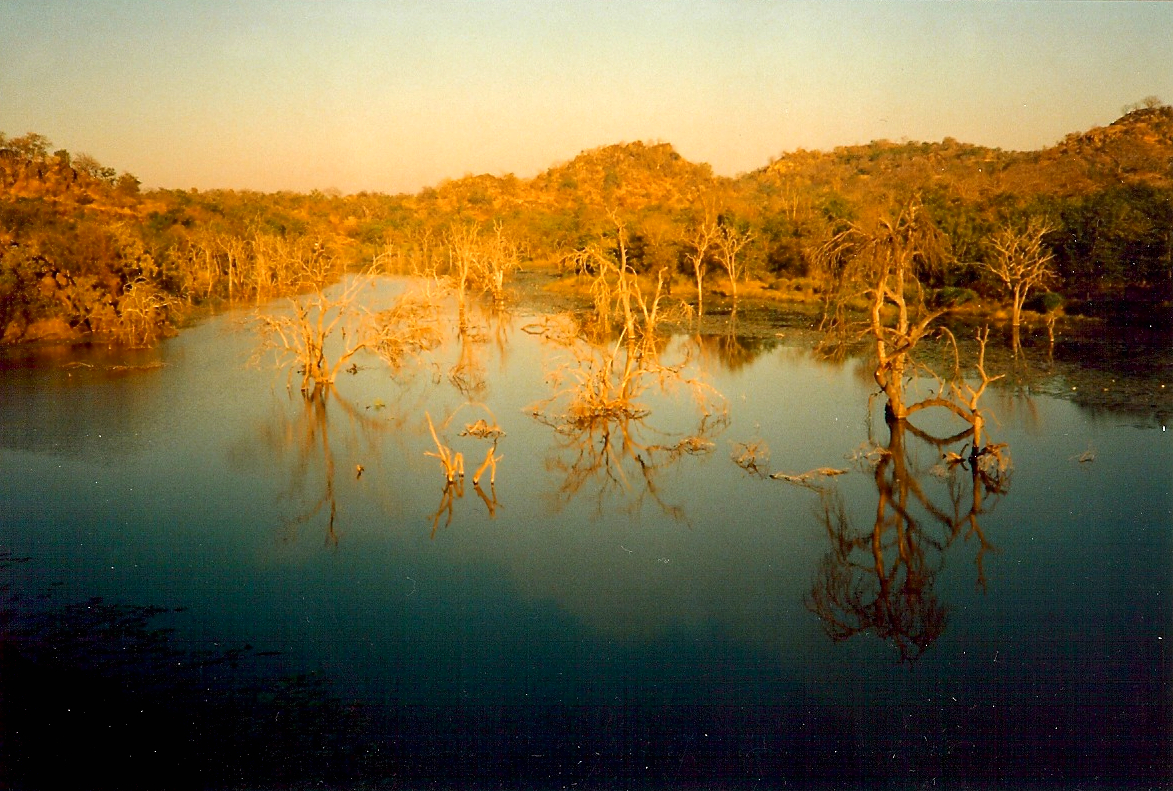
|
| Nyala Lake keeps the land and game watered even in dry spells. |
|

